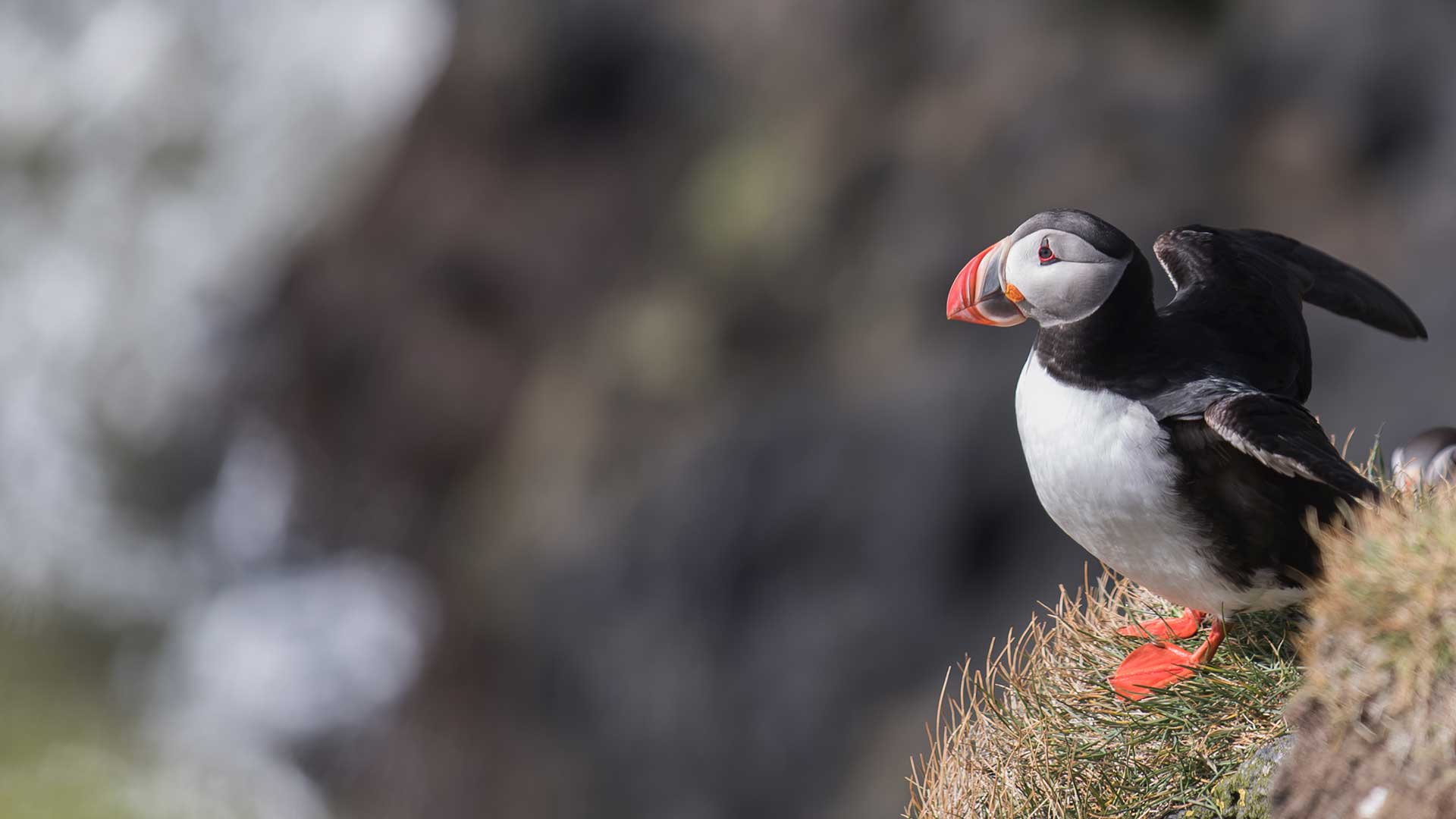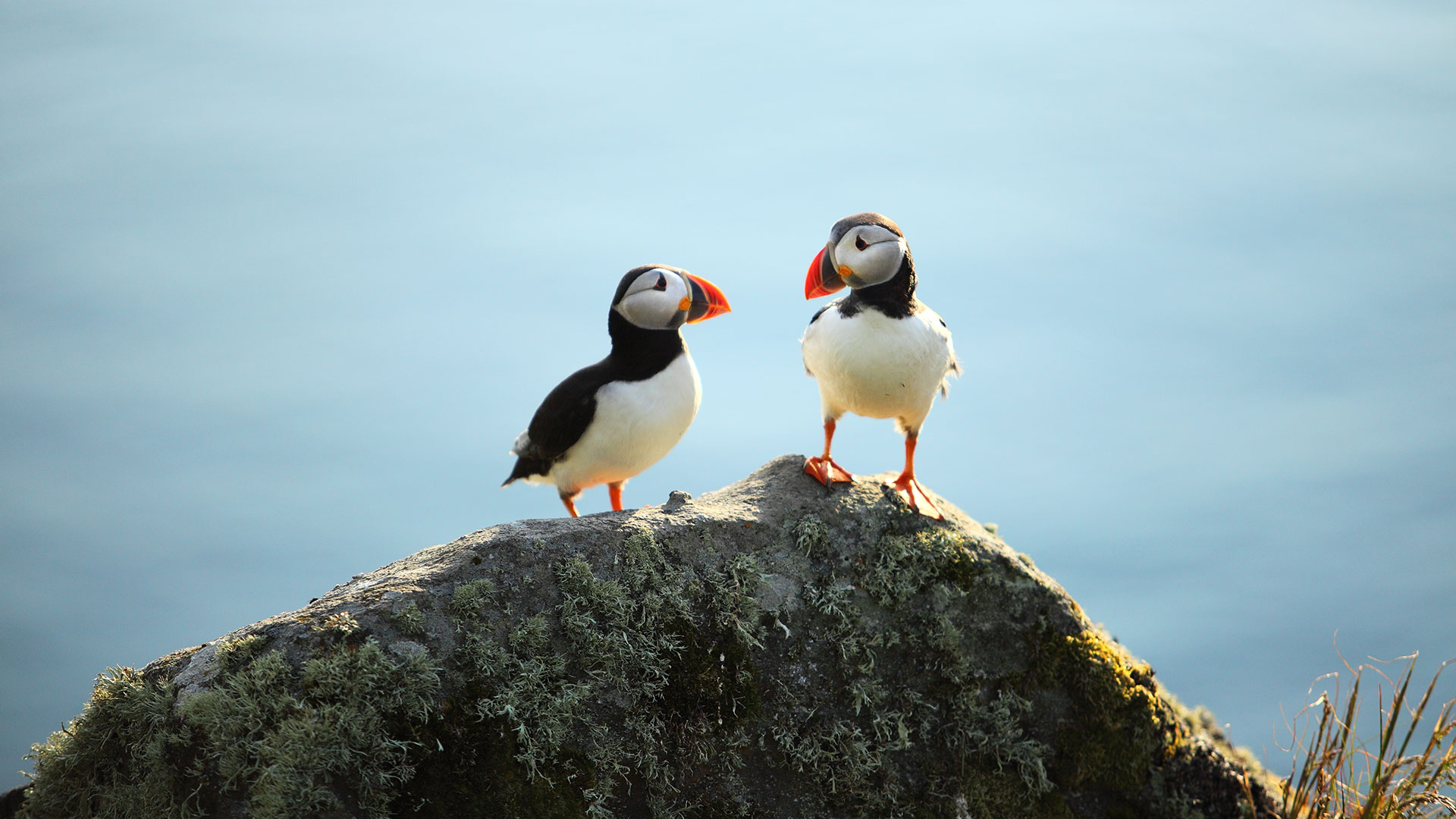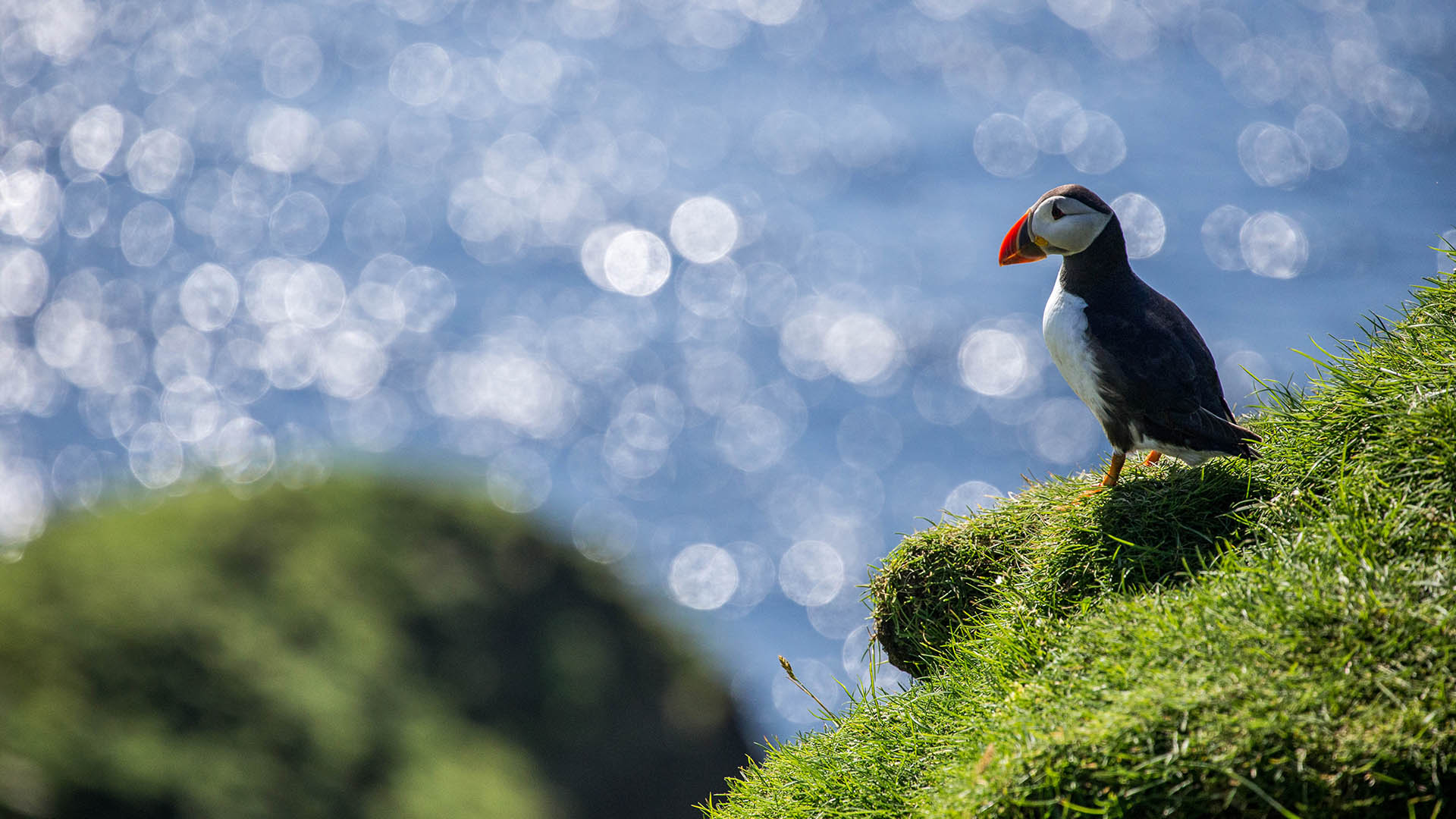When you travel to Iceland, you’ll soon find out that the colourful puffin is the country’s unofficial emblem. Attracting tourists to visiting centres, to towering bird cliffs and on sightseeing boat tours around the island, the Atlantic puffin has a magical draw.
Are you looking to learn more about this friendly looking bird? We’ve compiled some fun puffin facts so you know more about them when you come visit. Read on to discover more about their personalities, habits, as well as when and where to spot them in Iceland.
1. Puffins are expert divers and flappers
The puffin will probably remind you of the (completely unrelated) penguin. Their monotone plumage and petite wingspan are similarly built, but puffins are actually very capable fliers.
Since the puffin's wings are on the small size, these eager seabirds put in a lot of work to take flight, flapping their wings around 400 beats per minute. It all pays off in the end, as they can reach speeds up to 88 kilometres per hour (55 miles per hour).

That’s not their only impressive physical feat though. Puffins are also expert divers and swimmers. They flap their wings to swim underwater and can dive to depths of 60 metres (200 feet) in search of fish.
It's to their benefit that they can handle themselves in and out of water considering the following...
- Check out these summer trips in Iceland and don't forget to add a puffin tour to your itinerary
2. They spend most of the year at sea
Puffins spend 8 months of the year far from land, bobbing on the sea and diving to hunt for fish. In fact, they only come ashore to mate and nest.
Their return to nesting grounds generally takes place in mid-April each year. They then depart for another winter at sea by the end of August.
What's interesting is that puffins mate for life but don't necessarily spend their time at sea with their partner. Instead, mating pairs reunite at their usual nesting grounds each spring. Puffin chicks are known as pufflings, and the parents share child-rearing responsibilities for a few months before going their separate ways once more.
They nest in burrows that stretch about a metre underground.
Nesting spots include the coasts of Iceland, Greenland, Norway, Scotland and Ireland. In fact, the Cliffs of Moher on the Irish coast are a Special Protected Area for seabirds because so many colonies summer there.
- If you're interested in more puffin tour destinations, look up travel packages to Scotland, Ireland and Norway
- You can also learn more about combining tours of Iceland and Greenland for an epic Nordic journey

3. Puffins are the clowns of the sea
Despite spending so much of their lives on the water, puffins are still considered the clowns of the sea. Why? Well, if you have the chance to watch them taking off from the sea and landing again you'll understand.
As adept as puffins are at swimming and diving, beginning and ending their flight on the water is a comedy routine.
Puffins use their brightly coloured feet to run clumsily across the surface of the water before take-off. And their landings are anything but graceful, typically ending in a belly-flop or comedic tumble and roll across the water's surface.
They're also affectionately called clowns on account of their brightly coloured beaks.
4. The puffin's colourful beak is seasonal
The iconic feature of the Atlantic puffin is its striped brightly coloured beak. But did you know those dramatic hues are seasonal? Puffins malt during their time at sea and shed all the colourful portions of their beaks as well as the black markings around their eyes.
So if you ever come across a puffin during the winter you may not recognise it as a puffin, thanks to its drab grey pecker. Although, you’re unlikely to do so as even researchers know very little about the puffin’s lifestyle at sea.
Young puffins are similarly coloured when they first face the big wide world. Their faces, beaks and feet are all grey!
- Is the whole family interested in puffins? Get inspired by these family tours of Iceland
5. Puffins have big mouths
Parent puffins take turns fishing and looking after their puffling. For maximum efficiency, the joints of their beaks are notched. This means puffins can hang on to their catch even while diving back in, open-mouthed for more.
Another impressive fact? One little puffin can carry up to 10 fish in its beak at one time.

When and where to see puffins in Iceland?
It’s good to know so many great puffin facts, but do you want to see them for yourself? We know you do!
Around 60% of the global population of Atlantic puffins nest in Iceland each spring and summer. This is 8 to 10 million puffins coming to the island every year, making it an ideal location to spot them.
These colourful birds start arriving in Iceland as early as April, but the best time to see them is between May and early August. This is when you should travel to Iceland if seeing puffins is one of your main reasons for visiting.
As for the best locations to spot puffins in Iceland? There are colonies dotted all along Iceland's coastline. But some spots are better than others.
We recommend the Westman Islands in South Iceland, Grímsey island in North Iceland and the beautiful Westfjords. The Látrabjarg cliffs are in fact one of the most crowded bird cliffs in the world.
The best ways to see them include hiking along the coast and boat tours. A self-drive trip around the country will give you the best opportunities to tailor your days and itinerary to stop along the way for these fun excursions.
Don't hesitate to ask your travel consultant about adding a puffin tour or whale-watching cruise to your itinerary! It'll make your time in Iceland even more special.
-
Head off the beaten path in the Westfjords or North Iceland where you’ll find large bird cliffs
Intrigued to spot these captivating birds and explore Iceland's otherworldy landscapes?
Check out these popular Iceland tours for inspiration or get in touch so we can help plan your trip. One of our Reykjavík-based travel consultants will use their expert local knowledge to create your dream trip.
